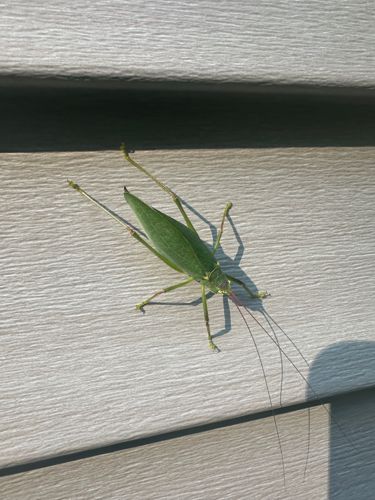Katydid
Scientific Name: Various genera within Tettigoniidae (e.g., Pterophylla, Microcentrum, Scudderia)
Order & Family: Order: Orthoptera, Family: Tettigoniidae
Size: Generally, katydids range from 1 to 5 inches (2.5 to 13 cm) in body length, with some tropical species being larger.

Natural Habitat
Katydids are typically found in trees, shrubs, tall grasses, and other dense vegetation. They prefer forests, meadows, gardens, and areas with abundant plant life.
Diet & Feeding
Most katydids are herbivores, feeding on the leaves, flowers, and seeds of various plants. Some species are omnivorous, supplementing their diet with small insects.
Behavior Patterns
Katydids are primarily nocturnal and are well-known for the distinctive sounds (stridulation) produced by the males to attract mates. They rub their wings together to create a 'katy-did, katy-didn't' sound. They are generally solitary and rely on their excellent camouflage to avoid predators. Females lay eggs in plant stems, bark, or leaves, often in late summer or fall.
Risks & Benefits
Katydids are generally harmless to humans, though some larger species can deliver a mild bite if handled, which is not painful or dangerous. They can sometimes cause minor damage to garden plants due to their herbivorous diet, but rarely in significant amounts. Ecologically, they are an important part of the food chain, serving as prey for birds, bats, and other predators, and they contribute to nutrient cycling through their feeding on plant matter.
Identified on: 8/13/2025